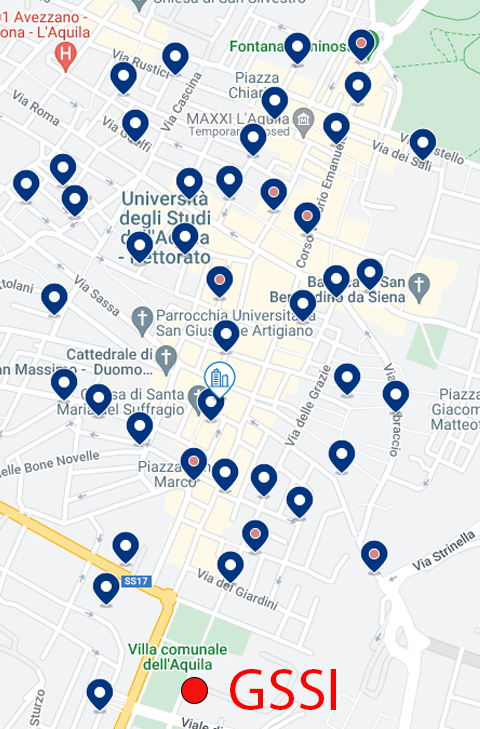Lunar Gravitational-wave Antenna - white paper kick-off
Rectorate/Building-Auditorium
GSSI

The Moon offers a unique environment characterized by an extremely weak seismic background and with very low and stable temperatures in its permanently shadowed regions (PSRs) at the lunar poles. These conditions make it possible to use the Moon as a gravitational-wave (GW) antenna by measuring the small vibrations of the Moon caused by passing gravitational waves. The Lunar GW Antenna (LGWA) would observe GWs in the band 1mHz - 1Hz thus providing the missing link between the space-borne GW detector LISA and terrestrial gravitational-wave detectors. The planning and operation of LGWA requires detailed knowledge of the elastic response of the Moon, depending on its internal structure and near-surface geology at the deployment site, and an assessment of the seismic background in a PSR.
The purpose of this meeting is to start discussions and planning of the LGWA white paper on GW science, multi-messenger astronomy, and lunar science. Registration is only required for people who intend to come in person.
How to reach L'Aquila:
The closest international airports are Rome Fiumicino (FCO) and Rome Ciampino (CIA).
Rome to L'Aquila:
For people who travel with public transportation, it is recommended to use bus connections. Buses leave from both airports in Rome, and also from the train station Tiburtina. The tickets need to be booked in advance using the web pages of the companies:
https://www.gasparionline.it/en/
https://global.flixbus.com/
One-way bus tickets currently cost less than 20€, and busses from the more distant airport FCO need about 2.5 hours to reach L'Aquila.
The buses from Rome arrive in L'Aquila at Hotel Amiternum. While most locals prefer to take a taxi from the bus station to their home or GSSI, it is also possible to take the last stretch to GSSI by public transportation. Line 2 with end station "terminalbus" has a few stops close to GSSI (GSSI is closest to the third and second-last stations marked in green before "terminalbus" on the Line 2 map):
https://www.ama.laquila.it/linee-e-orari/elenco-linee-ama/
Staying in L'Aquila:
There are several B&Bs and hotels in the historical part of the city in walking distance to GSSI (see map below). Only very few rooms are typically available with Airbnb.

Alessandro Frigeri
Alessandro Pajewski
Andrea Cozzumbo
Andrea Maselli
Andrea Melandri
Andrea Perali
Benedetta Mestichelli
Boris Goncharov
Elena Codazzo
Elisa Bortolas
Eugenio Coccia
Francesca Badaracco
Francesca Onori
Francesco Pannarale
Gianluca Di Rico
Gor Oganesyan
Jacopo Tissino
Jan Harms
Joris van Heijningen
Lorenzo Pizzuti
Luciano Piersanti
Marco Mirabile
Marco Olivieri
Marica Branchesi
Massimo Chiappini
Matteo Di Giovanni
Michelangelo Formisano
Morgane Zeoli
Nandini Hazra
Pawan Tiwari
Roberto Serafinelli
Silvia Piranomonte
Soumen Koley
Ulyana Dupletsa
